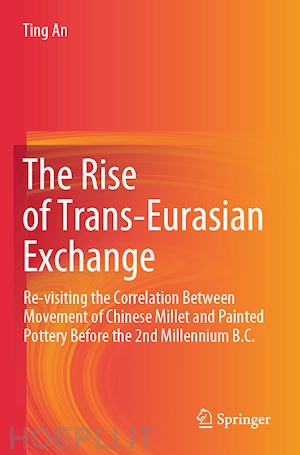

Questo prodotto usufruisce delle SPEDIZIONI GRATIS
selezionando l'opzione Corriere Veloce in fase di ordine.
Pagabile anche con Carta della cultura giovani e del merito, 18App Bonus Cultura e Carta del Docente
Dr. Ting An received her B.A. degree from Department of Archaeology and Museology, Peking University China in 2012, and the M.phil and Ph.D degrees in Archaeology from University of Cambridge UK. Since Nov. 2018, Dr. An has been at Zhejiang University as an assistant professor in Archaeology. Dr. An specialises in Archaeobotany and Neolithic Archaeology. Her recent research interests include: plant impressions identification, trans-Eurasian exchange and domestication of plants. Dr An has been undertaking a number of research projects funded by National Social Science Fund of China, Andrew Sherratt Grant etc. She serves as a reviewer of several Chinese and international journals concerning Archaeobotany and archaeological studies.











Il sito utilizza cookie ed altri strumenti di tracciamento che raccolgono informazioni dal dispositivo dell’utente. Oltre ai cookie tecnici ed analitici aggregati, strettamente necessari per il funzionamento di questo sito web, previo consenso dell’utente possono essere installati cookie di profilazione e marketing e cookie dei social media. Cliccando su “Accetto tutti i cookie” saranno attivate tutte le categorie di cookie. Per accettare solo deterninate categorie di cookie, cliccare invece su “Impostazioni cookie”. Chiudendo il banner o continuando a navigare saranno installati solo cookie tecnici. Per maggiori dettagli, consultare la Cookie Policy.